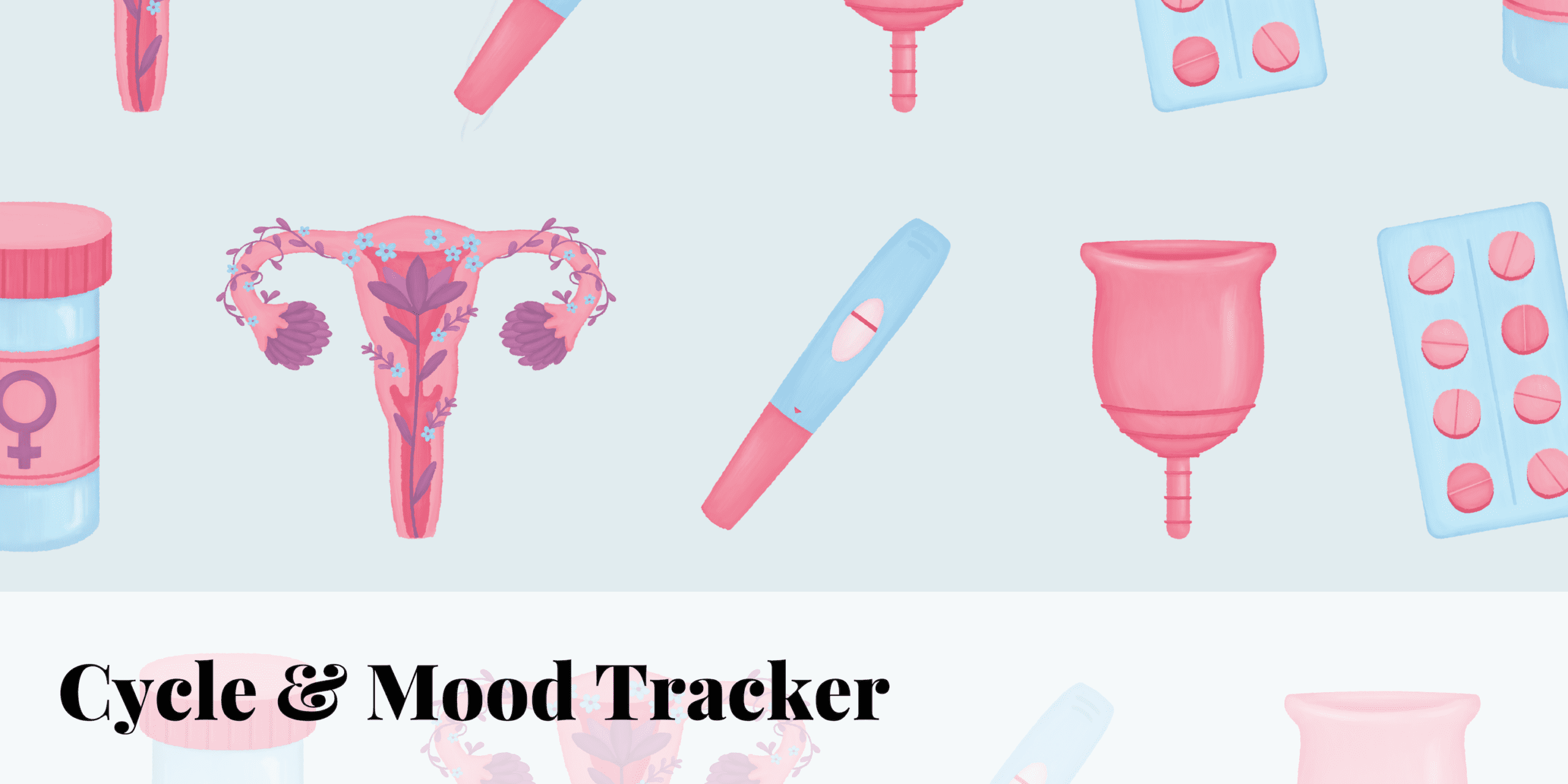Whether the cycle and mood tracker is used during the menstrual cycle or PMDD (Premenstrual Dysphoric Disorder), the importance is still highly valid. Utilizing a PMDD/Menstruation: Cycle and Mood Tracker for tracking symptoms of a menstrual cycle/PMDD or mood changes during these episodes can be helpful to both yourself and your health! It is essential to keep track of such changes so the necessary treatment can jump-start the life you’ve always wanted for yourself.
Right off the bat, the diary function in the CareClinic platform allows you to write (in your own words) all about how you are feeling that day and all of the associated mood changes that are being experienced. Imagine, whenever the mood changes from happy to irritable or angry, who has a pen and paper ready in hand? Nobody! This is the 21st century. A phone, on the other hand, is highly accessible as most people will have one in their pocket.
However, before fully understanding how CareClinic can help you keep track of your cycles and moods, let’s dive into understanding what the phases of a menstrual cycle and PMDD are.[1]
What is a “Normal” Menstrual Cycle?
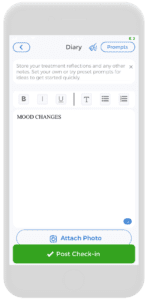
Phase 1: The Follicular, or Proliferative Phase
This phase occurs from days one to fourteen (if a twenty-eight-day cycle is assumed) and the most important hormone at play here is estrogen. The purpose of this phase is to grow the endometrial layer of the uterus (preparing to ultimately shed the blood seen during the period). 17-beta-estradiol (the specific name of the estrogen at play) “achieves this by increasing the growth of the endometrial layer of the uterus, stimulating increased amounts of stroma and glands, and increasing the depth of the arteries that supply the endometrium, the spiral arteries”(4).
Additionally, this phase is also essential in creating an environment that is “friendly and helpful to possible incoming sperm”. Estrogen will achieve this by “creating channels within the cervix, allowing for sperm entry”. These specific channels are made within the copious, watery, and elasticity changes of the cervical mucous (4).
Furthermore, during this phase, a “primordial follicle begins to mature into a Graafian follicle”. These surrounding follicles begin to degrade because this Graafian follicle will become the mature follicle. Ultimately, this mature follicle will be set up for ovulation (the next phase) (4).
Ovulation: Phase 2
Ovulation occurs on day fourteen (again, assuming a twenty-eight-day cycle); it simply refers to the release of the egg from the follicle! Just before the egg is let go, it is signalled by the highest levels of estrogen during the cycle. Interestingly, this signal will let the follicle know to release the egg (4). Pretty fascinating…
Also, the changes to the cervix (as previously mentioned in phase one) will further increase. Thus, allowing for increased, waterier cervical mucous to better accommodate the potential sperm (for making babies!!!) (4).
Additionally, the levels of estrogen will begin to fall at the end of ovulation (4).
Phase 3: The Luteal or Secretory Phase
This decline in estrogen will be counterbalanced by the rise in another hormone known as progesterone. Intriguingly, this hormone will better prepare the uterus for potential fertilized ovum implantation (basically, it is preparing the uterus to make a baby!!). It does it by increasing the blood supply and stimulating more mucous secretions. Ultimately, progesterone stimulates the endometrium to slow down “endometrial proliferation, decrease lining thickness, develop more complex glands, accumulate energy sources in the form of glycogen, and provide more surface area within the spiral arteries”(4).
*Additionally, progesterone will increase the hypothalamic temperature, so body temperature will increase during this luteal phase so do not be alarmed (4).
Phase 4: Menstruation
When these hormone levels decrease, the endometrium layer, as it has been changed throughout the menstrual cycle, cannot be maintained. Therefore, this is what we know as “menses” or period blood. This phase is considered from day zero to day five of the next menstrual cycle. However, the duration of menstruation is highly variable. The usual duration of any menstrual flow is often three to five days, but can flow as short as one day and as long as eight days in a normal female (4).
Menstrual blood is mainly arterial blood, with only twenty-five percent of the blood being venous blood. Essentially, it contains “prostaglandins, tissue debris, and relatively large amounts of fibrinolysis (break down) from endometrial tissue”. The fibrinolysis breaks down the wall so that menstrual blood does not contain “clots”. However, unless the flow is heavy, some “clots” are seen (and are not in need of instant worry) (4).
Fundamentally, the amount of blood loss can also range. It can range from slight spotting to eighty millilitres (mL) and the average being thirty mL. Loss of more than eighty mL of the blood is considered abnormal and should be discussed with the healthcare team(4)!
Menstrual Cycle Tracker
After learning about the normal menstrual cycle, you can utilize the CareClinic as your own personal menstrual cycle tracker and mood too! Also, it is important to keep track of:
- Start Date (1)
- End Date: How long does the period typically last? Is it longer or shorter than usual? (1)
- Flow: Record the heaviness of the flow. Does it seem lighter or heavier than usual? How often do you need to change your sanitary protection? Have you passed any blood clots? (1)
- Abnormal Bleeding: Are you bleeding in between periods? (1)
- Pain: Describe any pain associated with your period. Does the pain feel worse than usual? (1) This can be written in the Diary Function in the CareClinic Platform (Please see illustration from the beginning)
- Other Changes: Have you experienced any changes in mood or behavior? Did anything new happen around the time of change in your periods? (1)
A common theme occurring for all of these trackings is utilizing the CareClinic Platform. A one-stop-shop for all of your healthcare needs; a menstrual cycle tracker and mood too. A part of your essential “period tracker utilities”. Whatever you need to get ahead of your health!
The Clinical Significance
A female will undergo an average of FOUR HUNDRED AND FIFTY menses throughout her lifetime!!! Therefore, it is important to understand the menstrual cycle and its physiology because of the various complications, consequences, and distress that it may have for a female patient (for example, PMS or PMDD symptoms! Without an understanding of the female anatomy and menstrual cycle physiology, a physician would be unable to obtain a complete history and physical to understand what may be causing distressing/alarming symptoms (4).
Furthermore, infertility is a prominent issue in society. Since this can be an issue for many struggling parents who wish to conceive (but cannot), each patient’s menstrual cycle must be evaluated as a possible area of concern for her infertility. Therefore, knowing the menstrual cycle as it is the basis for how a woman’s body prepares for pregnancy should be understood (4).[2]
The Period and Symptoms
Relatively “Normal” Symptoms
The period and symptoms. The dreadful symptoms. All women can relate to this. Frustratingly, the period and symptoms cannot be separate, listed below are symptoms that are often seen during periods:
- Moodiness (3)
- Trouble sleeping (3)
- Food cravings (3)
- Cramps in the lower abdomen and back (3)
- Bloating (3)
- Tenderness in the breasts (3)
- Acne (3)
“Irregular Periods”
Menstrual Cycle Irregularity Causes
There can be many reasons a woman may experience irregularities during their menstrual cycle, including the following:
- Pregnancy or breastfeeding: A missed period can be an early sign of pregnancy. Breast-feeding typically delays the return of menstruation after pregnancy (1)
- Eating disorders, extreme weight loss, or excessive exercising: Eating disorders — such as anorexia nervosa — extreme weight loss and increased physical activity can disrupt menstruation (1)
- Polycystic ovary syndrome (PCOS): Women with this common endocrine system disorder may have irregular periods as well as enlarged ovaries that contain small collections of fluid — called follicles — located in each ovary as seen during an ultrasound exam (1)
- Premature ovarian failure: Premature ovarian failure refers to the loss of normal ovarian function before age forty. Women who have premature ovarian failure — also known as primary ovarian insufficiency — might have irregular or occasional periods for years (1)
- Pelvic inflammatory disease (PID): This infection of the reproductive organs can cause irregular menstrual bleeding (1)
- Uterine fibroids: Uterine fibroids are noncancerous growths of the uterus. They can cause heavy menstrual periods and prolonged menstrual periods (1)
Reasons to Talk to a Professional
- Your periods become erratic after having been regular (1)
- Bleeding for more than seven days (1)
- Bleeding more heavily than usual or soaking through more than one pad or tampon every one to two hours (1)
- Your periods are less than twenty-one days or more than thirty-five days apart (1)
- Bleeding between periods (1)
- Develop severe pain during a period (1)
- Suddenly get a fever and feel sick after using tampons (1)
- Have not started menstruating by the age of sixteen (3)
- You think you might be pregnant—for example, you have had sex and your period is at least five days late (3)
- Your period has not returned within three months after stopping birth control pills and you know you are not pregnant (3)
- Any questions or concerns about your period or possible pregnancy (3)
Imagine trying to keep track of all of this in your head…Impossible!! Stay on track with all of your period and symptoms by using the CareClinic platform to make your life more convenient! Another reason to use this platform as your period tracker utilities.[6][7][8][9]
PMDD
PMDD Vs. PMS
Ultimately, PMDD and PMS (premenstrual syndrome) are often very similar. Some people may not even know the difference. However, PMDD is known to be a more severe, and sometimes to be a disabling extension of PMS. Although PMS and PMDD both have physical and emotional symptoms, PMDD will cause extreme mood shifts that can disrupt daily life and damage relationships (2).
PMDD Symptoms
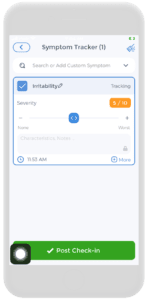
- Sadness or hopelessness (2)
- Anxiety or tension (2)
- Extreme moodiness (2)
- Marked irritability or anger (2)
Cycle Tracking for PMDD: These specific symptoms can ease the cycle tracking for PMDD. Simply, find the symptom that is affecting you and input/record it in the Symptom Tracker in the CareClinic Platform. From here, it will be in a private/safe/confidential place and can be accessed when necessary, be it daily, weekly, or monthly (depending on your preference). Utilize a useful tracker for all cycle tracking for PMDD reasons. Stay ahead of all the symptoms- and become the healthier (and happier) version of yourself! Do not let PMDD win.
Cause of PMDD
Unfortunately, the cause is unknown. However, it is believed that since underlying depression and anxiety are common in both PMS and PMDD, therefore it can be possible that the hormonal changes that trigger a menstrual period worsen the symptoms of mood disorders (2).
Treatment of PMDD
Medications
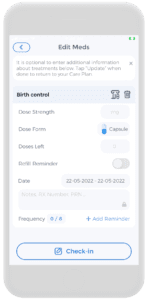
- Antidepressants: Selective serotonin reuptake inhibitors (SSRIs), such as fluoxetine (Prozac, Sarafem, others) and sertraline (Zoloft), can help reduce emotional symptoms, fatigue, food cravings, and sleep problems (2)
- Birth control pills (illustrated in the picture on the right): Taking birth control pills with no pill-free interval or with a shortened pill-free interval can help reduce PMS and PMDD symptoms (2)
Imperatively, it is important to have this discussion with the healthcare team treating you. The choice of medication will differ depending on several factors and tolerable side effects. Also, the abrupt stopping of taking these medications can be dangerous as well. It is important to discuss how to taper off- if symptoms are getting better etc.
By using the CareClinic platform, the Medication Tracker is a handy tool to keep track of all medications (if taken). The dosage ad refill reminders are all available here and can help you keep track of all your medication needs (especially since life gets busy and who wants to remember to take a pill at a certain time or have to run to the pharmacy late at night with panic because there are no more pills available…).
Non-Medicinal Options
If swallowing medicine is not “your thing” or simply perhaps not the best option for you, it is important to discuss other methods to help treat your PMDD. Speak to a professional. The ones listed below are all just suggestions. Remember to always speak to the healthcare team before trying any of the below.
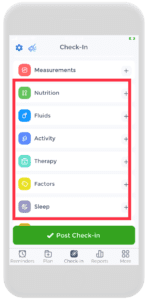
- Nutritional supplements: Consuming 1,200 milligrams of calcium daily may possibly reduce symptoms of PMS and PMDD. Vitamin B-6, magnesium, and L-tryptophan also may help, but talk with your doctor for advice before taking any supplements (2)
- Herbal remedies: Some research suggests that chaste berry (Vitex agnus-castus) may possibly reduce irritability, mood swings, breast tenderness, swelling, cramps, and food cravings associated with PMDD, but more research is needed. The U.S. Food and Drug Administration does NOT regulate herbal supplements, so speak with your doctor before trying one (2)
- Diet and lifestyle changes: Regular exercise often reduces premenstrual symptoms. Also, cutting back on caffeine, avoiding alcohol, and stopping smoking may ease symptoms. Getting enough sleep and using relaxation techniques, such as mindfulness, meditation, and yoga also may help. Additionally, avoid stressful and emotional triggers, such as arguments over financial issues or relationship problems, whenever possible (2)
All of the above can be used in tracking through functions available in the CareClinic platform; whether it is for activity, nutrition, therapy, or other factors! This is within the red box in the picture on the left.[10][11][12][13][14][15]
Utilizing CareClinic as an all-in-one Cycle & Mood Tracker
Begin your journey today; one step closer to achieving all your health needs and desires! Be one step ahead of the menstrual cycle and do not let PMDD dictate how you live your life! Download the CareClinic Platform using your iOS and Android devices today by clicking below.
References:
- Mayo Clinic. (n.d.). Menstrual Cycle: What’s Normal, What’s Not. Retrieved from: https://www.mayoclinic.org/healthy-lifestyle/womens-health/in-depth/menstrual-cycle/art-20047186
- Mayo Clinic. (n.d.). Premenstrual Dysphoric Disorder: Different from PMS?. Retrieved from: https://www.mayoclinic.org/diseases-conditions/premenstrual-syndrome/expert-answers/pmdd/faq-20058315#:~:text=Premenstrual%20dysphoric%20disorder%20(PMDD)%20is,daily%20life%20and%20damage%20relationships.
- The Cleveland Clinic. (n.d.). Normal Menstruation. Retrieved from: https://my.clevelandclinic.org/health/articles/10132-normal-menstruation
- Thiyagarajan DK, Basit H, Jeanmonod R. Physiology, Menstrual Cycle. [Updated 2021 Oct 30]. In: StatPearls [Internet]. Treasure Island (FL): StatPearls Publishing; 2022 Jan-. Available from: https://www.ncbi.nlm.nih.gov/books/NBK500020/
References
- “Premenstrual Dysphoric Disorder (PMDD): Causes & Treatment”. https://my.clevelandclinic.org/health/diseases/9132-premenstrual-dysphoric-disorder-pmdd
- “The Normal Menstrual Cycle and the Control of Ovulation – Endotext – NCBI Bookshelf”. https://www.ncbi.nlm.nih.gov/books/NBK279054/
- “Premenstrual Syndrome (PMS): Symptoms & Treatment”. https://my.clevelandclinic.org/health/diseases/24288-pms-premenstrual-syndrome
- “What to expect”. https://www.nj.gov/health/womenshealth/reproductive-health/periods-menstruation/what-to-expect/index.shtml
- “9 Most Common Menstrual Symptoms And How to Manage Them”. https://www.dulycare.in/post/9-most-common-menstrual-symptoms-and-how-to-manage-them
- “”. https://www.nhs.uk/conditions/irregular-periods/
- “What causes menstrual irregularities? | NICHD – Eunice Kennedy Shriver National Institute of Child Health and Human Development”. https://www.nichd.nih.gov/health/topics/menstruation/conditioninfo/causes
- “What you need to know about irregular periods | UCLA Health”. https://www.uclahealth.org/news/article/what-you-need-know-about-irregular-periods
- “Irregular Periods: When to See a Doctor”. https://www.unitypoint.org/news-and-articles/irregular-periods-when-to-see-a-doctor
- “Treating Premenstrual Dysphoric Disorder – Harvard Health Publishing – Harvard Health”. https://www.health.harvard.edu/womens-health/treating-premenstrual-dysphoric-disorder
- “Premenstrual Dysphoric Disorder: Diagnosis and Management in Primary Care | MDedge”. https://community.the-hospitalist.org/content/premenstrual-dysphoric-disorder-diagnosis-and-management-primary-care
- “Premenstrual Dysphoric Disorder”. https://www.uspharmacist.com/article/premenstrual-dysphoric-disorder
- “What Is Premenstrual Dysphoric Disorder (PMDD)? – Adoctor”. https://adoctor.org/diseases-conditions/what-is-premenstrual-dysphoric-disorder-pmdd/
- “Hormonal Birth Control for PMDD and PMS: Does It Help?”. https://helloclue.com/articles/sex/does-birth-control-help-with-pms-or-pmdd-or-make-it-worse
- “🌸 Finding Balance: PMDD and Integrative Psychiatry Treatment Options”. https://www.sps.healthcare/post/finding-balance-pmdd-and-integrative-psychiatry-treatment-options

